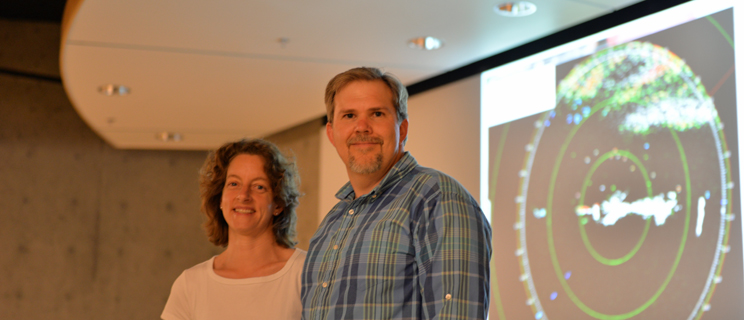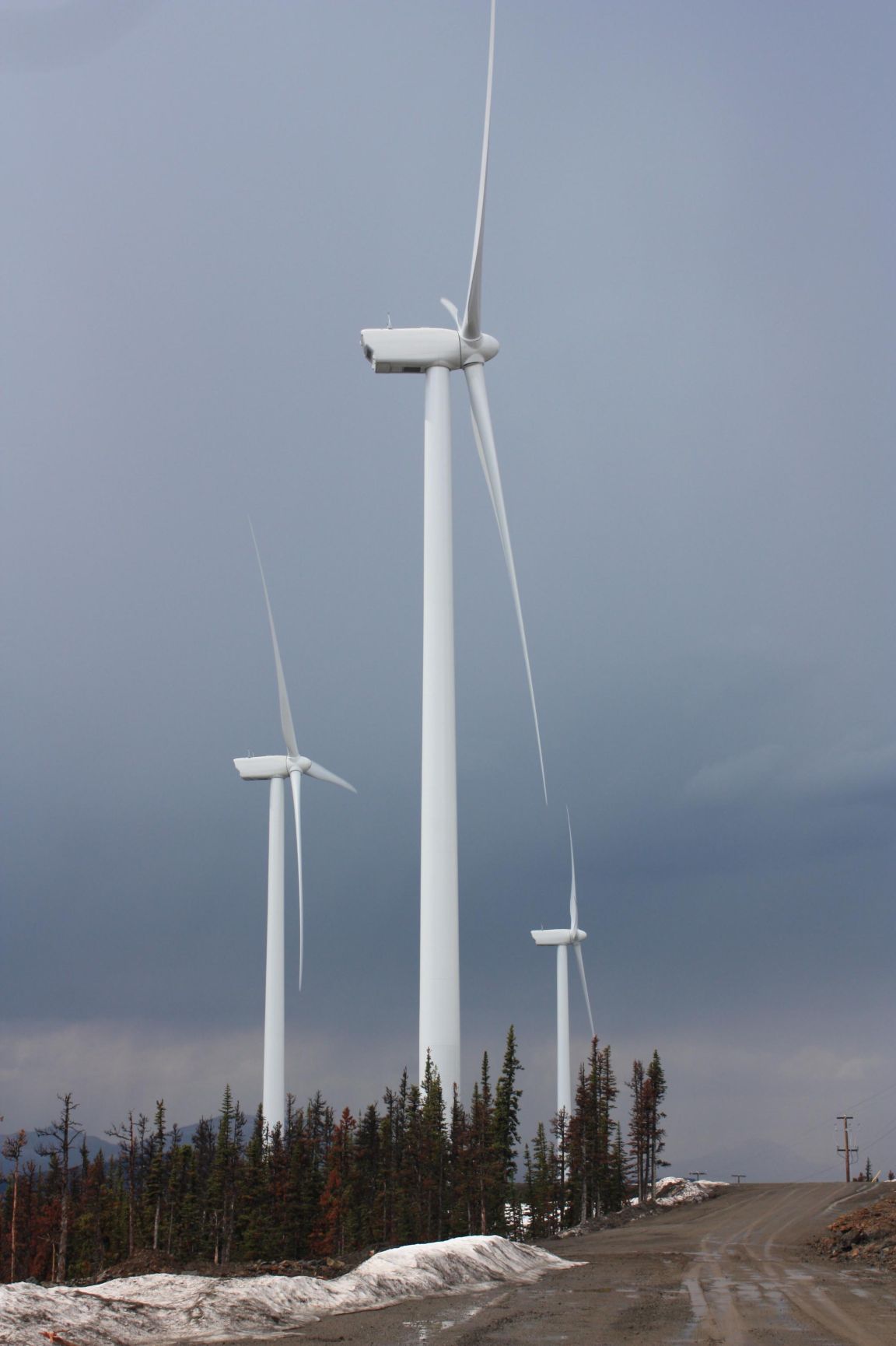UNBC Research Highlights Bird-Wind Energy Project Interactions
Prince George, BC – A new monitoring method developed by University of Northern British Columbia Biology Professor Ken Otter will help wind farm proponents have a better understanding of how their projects interact with birds.

Research Associate Isobel Hartley and Professor Ken Otter. Download High Resolution Image.
Otter and his team of researchers spent years looking at bird migration patterns around the Dokie I Wind Energy Project near Chetwynd and determined that particular project posed little risk to the avian creatures. Otter’s team used radar, night vision technology, and other visual techniques to track flight paths of the birds in the area. They were able to paint an accurate picture of how many birds were migrating through the region relative to those being struck by the turbine blades, how many birds were modifying their trajectory to avoid the blades, and how many were avoiding the area altogether.
“It was an interesting research project because we were able to track bird movement through the area for the period before they were going to start building, through the construction, and then post-construction, so it’s a really nice data set that we’re working with,” Otter said.
In his report, Otter was able to conclusively demonstrate that most birds were able to avoid the blades by making slight alterations to their flight paths, rather than avoiding the wind facility entirely.
“We were able to show that there isn’t large-scale displacement,” Otter said. “They’re not avoiding the installation; they’re just not getting hit by it.”
In the past, research often focused on counting the number of birds beforehand, using the location and speed of the turbines to determine how many birds would get struck, and then counting the number of bird carcasses post-construction. That technique did not take any avoidance activities of the birds into account.
Although the conclusions suggest that the risk to birds at the Dokie site is low, Otter said local conditions at other projects could lead to different results. He said the technique used during this study could be replicated in other locations to give a full picture of how birds interact with large wind energy facilities.
The complete report is available online through the Natural Resources & Environmental Studies Institute's technical reports series here.
-30-

Wind turbines. Photo credit Ken Otter.
Download High Resolution Image.

Dokie I Wind Energy Project.
Photo credit Marc d'Entremont.
Download High Resolution Image.